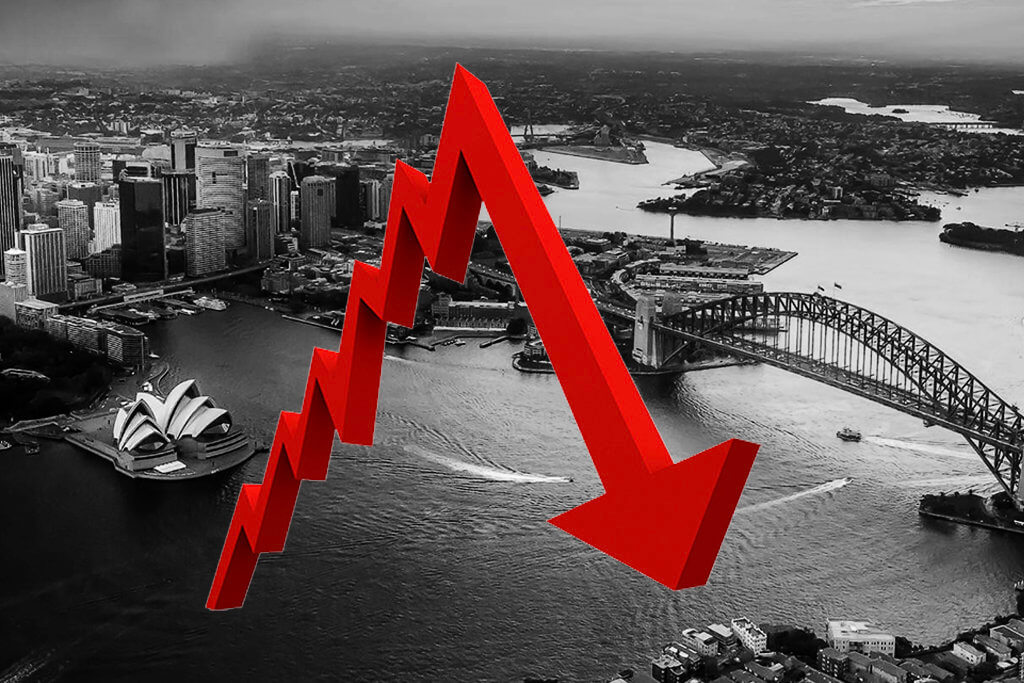To hit rock bottom is to fall from grace, at least that’s how more developers have been beginning to feel for the better part of the last year and a half.
Free-falling property prices across the nation, a sharp drop off in foreign investment and a circus of a royal commission which has subsequently resulted in a severe tightening on lending have come together to leave a large majority of those in the property industry in an unwanted predicament.
We wish we could tell you that there’s some good news on the horizon, that 2019 will be the year that things turn around, but the harsh reality is that market conditions may get even worse before they get better.
For Sydney, 2018 marked the year prices fell for the first time over a 12-month period since 2012 having dropped more than a stunning 10 per cent since peaking in July 2017. AMP Capital’s Shane Oliver expects prices in Sydney to drop by another 10 per cent over the 2019 calendar year.
“The drivers of that are a continued credit squeeze and the fundamentals like the increased supply of apartments, a lack of foreign investment and possible changes to the capital gains tax and negative gearing at the next election,” Oliver told the Australian Financial Review.
“The pipeline of apartments yet to be built is still immense, there’s a huge amount of cranes up over the city and the vacancy rate is now above it’s long-term average and rising,” said Oliver.
Dr Oliver isn’t alone in his predictions: Morgan Stanley’s forward-looking housing model (MSHAUS) – something that has been a more than useful indicator in predicting changes in home prices in the past – suggests the current downturn will become Australia’s largest since the early 1980’s.
“We struggle to see improvement in any of our components over the next year, with pre-existing headwinds of net supply, an RBA on hold and sustained focus on lending standards, all independent of potential negative gearing/capital gains tax changes,” Morgan Stanley says.

“We now see a 10-15 per cent peak to trough decline in real home prices, from 5-10 per cent previously, which would mark the largest declines since the early 1980s.”
The gap between supply and demand, especially for apartments, is just too large to be sustainable; Morgan Stanley says the apartment boom in most capital cities puts completions at the 215,000 mark, while demand is estimated to sit around 175,000.
With Sydney and Melbourne consisting of 40 per cent of all Australian homes and accounting for 60 per cent of the nation’s total housing wealth, it’s no surprise that what goes on in this cities is widely reflected elsewhere in the country.
So Australia’s record building boom and subsequent oversupply predominantly located in Sydney, Melbourne and Southeast Queensland, alongside the fact that tighter lending restrictions seem to be going nowhere fast, naturally places downward pressure on property prices.
We’re a nation notorious for its love for property, which also happens to be the largest asset held by a majority of Australian households. If these predictions prove to be correct it would without doubt weigh on spending, and if consumption weakens, it’s in turn likely that GDP growth, employment, wages and inflation would also take a beating.
Overall sentiment has also dropped following the debacle of Sydney’s Opal Tower which, less than six months old, was evacuated on Christmas Eve after cracks were found in the building sparking fears it would collapse.
With a seemingly large amount of cards stacked against you, what strategy do you have in place to counteract the current state of the market? Do you have one? Maybe we can help.
Twillis provides developers with solutions to increase the saleability of their projects no matter the market conditions. And with the current market conditions having seen (much) better days and not expected to recover any time in the foreseeable future, now’s the time for action.
Click here to learn how Twillis can help your business today.

